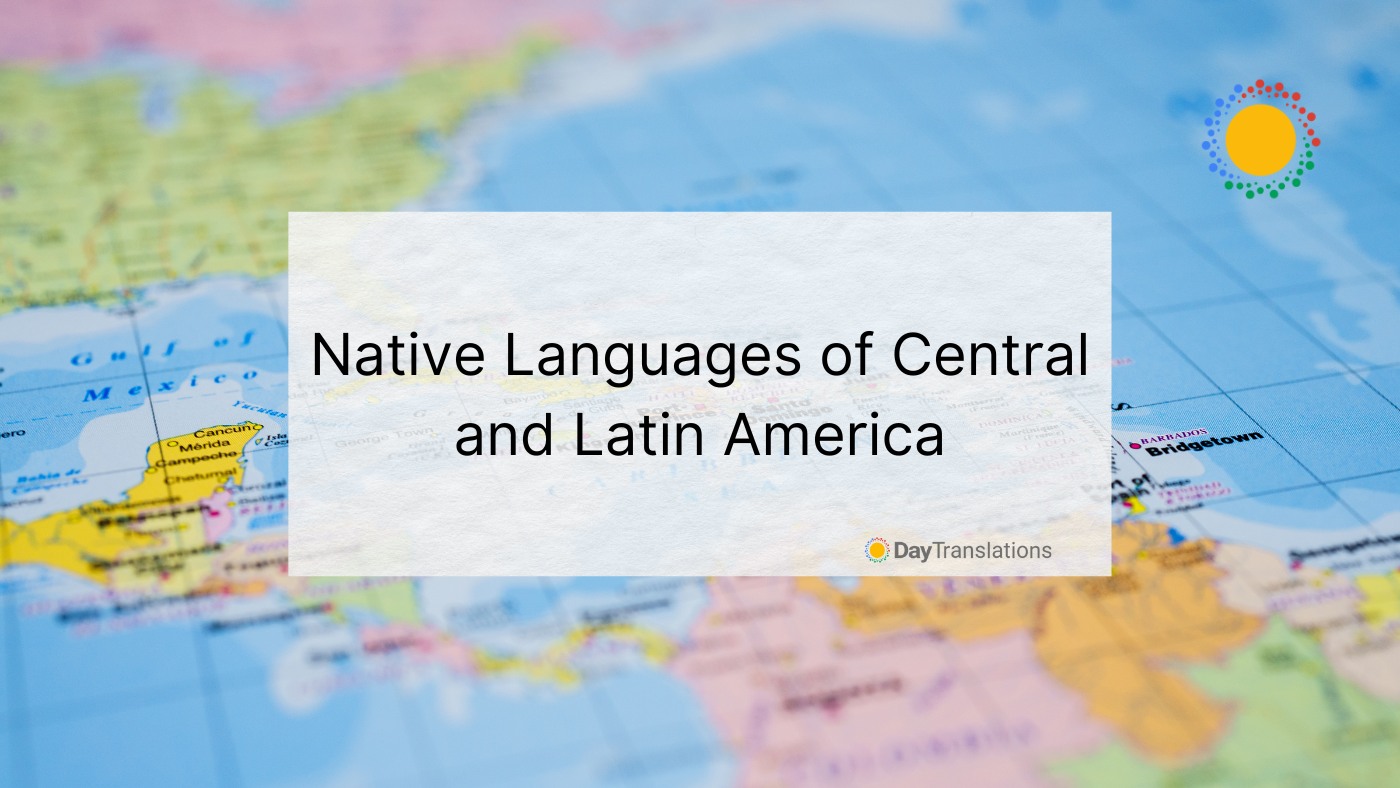Within the Latin American region, Central America to be more specific, there are over 560 languages that are native to the region. We’re aware that Spanish is one of the main languages spoken by the Latin American population. It is estimated that approximately 32 million people speak this language. But today, we’re exploring some other languages of Central and Latin America!
Keep reading to explore with us and find out more about some of the native languages spoken in the Central/Latin America region.
Understanding the Central America and Latin America Region
We can’t go any further without clearly understanding what areas make up the Central and Latin America region. That said, here are the working definitions that we’ll use.
- The Latin American region spans two continents. They are North America, including Central America, the Caribbean, and South America. In total, there are 33 countries.
- Central America is made up of 7 countries which include: Guatemala, Honduras, Belize, El Salvador, Costa Rica, Nicaragua, and Panama.
Some Native Languages of Central and Latin America
Now that we have a working definition of the region, it’s now time to get down to the meat of the matter. Below we’ll explore some of the many native languages spoken within the region and some critical details about each.
Let’s go!
Mayan
Mayan is a family of languages. This family of languages is said to have originated in Mexico around 5000 years ago. There are around 69 variations of the Mayan language. It is believed that around 6 million people still speak variations of the Mayan Language today.
Because there are so many variations of the language, in Guatemala alone, for example, there are around 22 variations of the Mayan Language spoken regularly.
There are drawbacks when it comes to the preservation of the Mayan family of languages, however. The native speakers of these languages do not write or officially communicate using this language, and as such, within a few years, it may die out due to a lack of preservation, especially when it comes to writing in it.
Quechua
Quechua is probably the most widely spoken native language in Central and Latin American regions. The estimated number of speakers comes up to around 8 million.
There are other names that Quechua goes by. They are Kichwa, Runa Shimi, or Runa Simi. It is mainly spoken within the Andean Highlands of Peru, along with areas in Bolivia and Ecuador.
A fun fact that you probably didn’t know is that words have been adapted into the English language from this family of languages. Some of them are quinoa, beef jerky, llama, poncho, and condor.
Guarani
Guarani is one of the official languages of Paraguay. It is widely spoken in Paraguay along with Spanish. Like so many of the other native languages within the Latin American region, Gurani is a family of languages.
In Paraguay alone, Gurani is spoken by approximately 5 million people. A fun fact about the Guarani Language is that it is probably the only indigenous language within the Latin American region that is widely integrated into the national life of a country today.
In Paraguay, Guarani is taught in schools and incorporated into the Paraguayan people’s arts and cultural expressions. Also of importance to note is that Paraguayan Gurani, when translated to English, means ‘the people’s language’.
Nahuatl
The Nahuatl language is originally from Mexico. It was the language of ancient Aztecs and is today still spoken by around 2 million people in Central Mexico alone.
Given that the Nahuatl language dates back to the 7th Century, it has influenced the English language in the form of words used today. Of notable mention are Chocolate, Chilli, Avocado, Chia, Coyote, and tomato.
There have been efforts made in Mexico to integrate the Nahuatl language on a more official basis within the society. Evidence of this is shown through it being taught as a second language in some schools.
Aymara
Aymara is both a language and a group of indigenous people. Historically, there’s no accurate trace of where and how the language originated, but it has been spoken by the people of Bolivia and Peru for centuries.
In Bolivia, for example, Aymara is one of their official languages and is spoken by as many as 2.5 million people. Over the years, the Aymara language has evolved, so much so that it has adopted the Latin Alphabet. This adoption has helped in the preservation of this language.
That’s a Wrap on the Languages of Central and Latin America!
At Day Translations, we’re all about languages. That said, we enjoy exploring languages and learning about their origins and the cultures and the people behind them.
Don’t forget that for all your translation, localization, and interpretation needs, our team of professionals is available to help 24/7, 365 days a year. Contact us today to get started.














Sorry, the comment form is closed at this time.